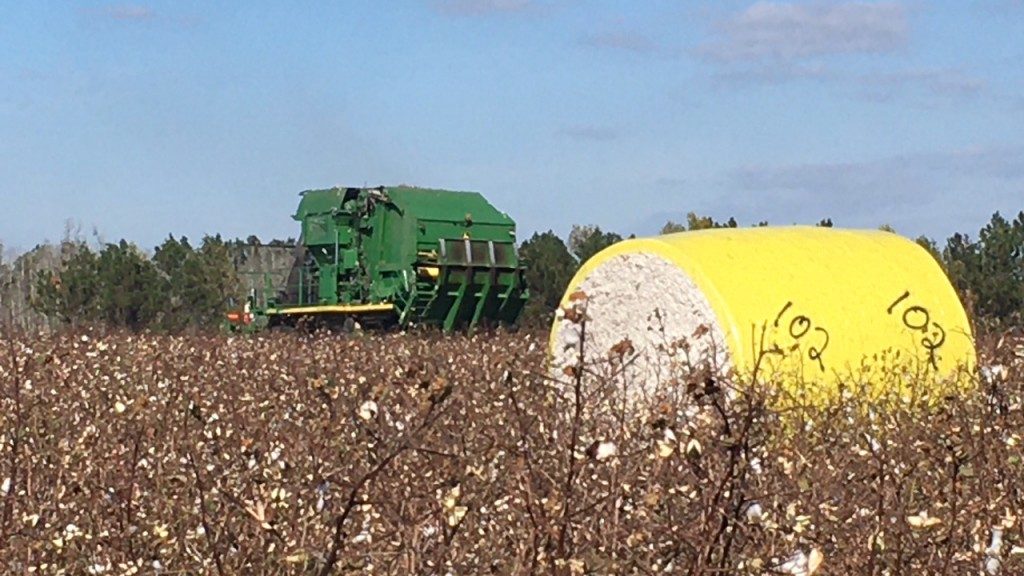The topic this week has been cotton jassid. Below is a brief update from Dr. Phillip Roberts about this pest from the August edition of the UGA Cotton newsletter.
Cotton Jassid or two-spot cotton leafhopper, Amrasca biguttula, is an invasive insect from the Indian subcontinent. It was first detected in the US in Florida in 2024 and we have currently detected the Jassid in 27 south Georgia counties (we are waiting for official identification but are confident this is cotton jassid). Cotton jassid is a potential pest of cotton as it requires management in cotton where the pest is native. The Florida Department of Agriculture and Consumer Services released a Pest Alert in December 2024 and provides good information on thisinvasive bug, see online at: https://ccmedia.fdacs.gov/content/download/117692/file/two-spot-cotton-leafhopper-pest-alert.pdf Cotton Jassids are small leafhoppers, about 1/10 inch in length. They are sucking insects and feed on the underside of leaves. This insect typically infest edges and ends of fields (similar to whiteflies) and in most cases infestations are low. However, we need to be aware of this new potential pest. When scouting be sure you are 8-10 rows from edges or 30-40 feet from ends. To scout, turn an individual expanded main stem leaf from one of the top 5 nodes and count immatures on the underside of the leaf (see pic below). We cannot identify species of nymphs but adults are easily recognized by two black spots on the wings (see pic below). Plant injury includes yellowing of leaves on the outer edges or hopper burn or leaf puckering (see pics below). If you detect jassids in the field please contact your county agent for the most current information on thresholds and insecticide selection. This is an evolving situation and management strategies are subject to change.
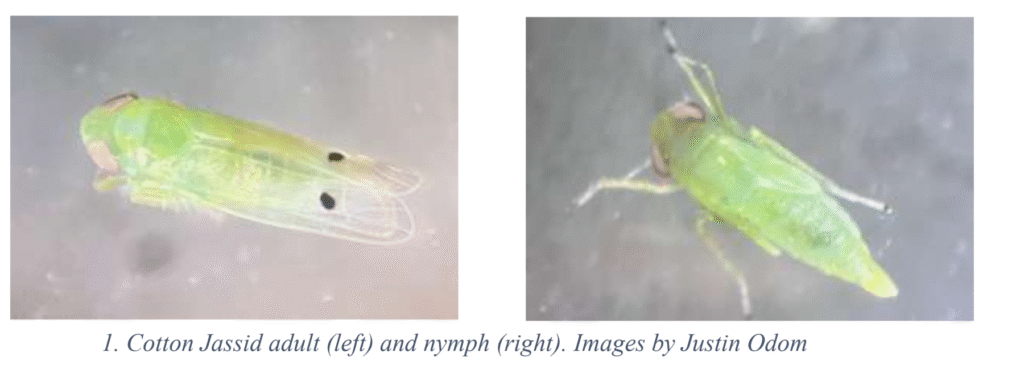
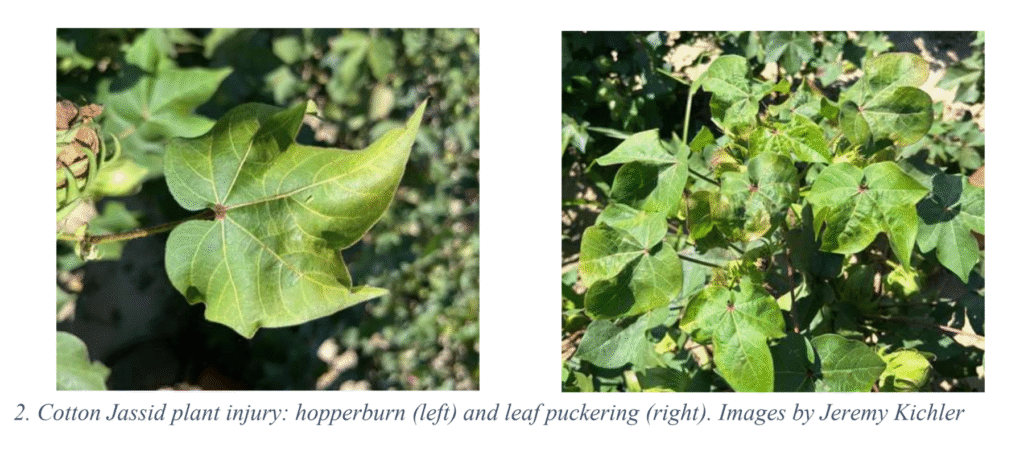
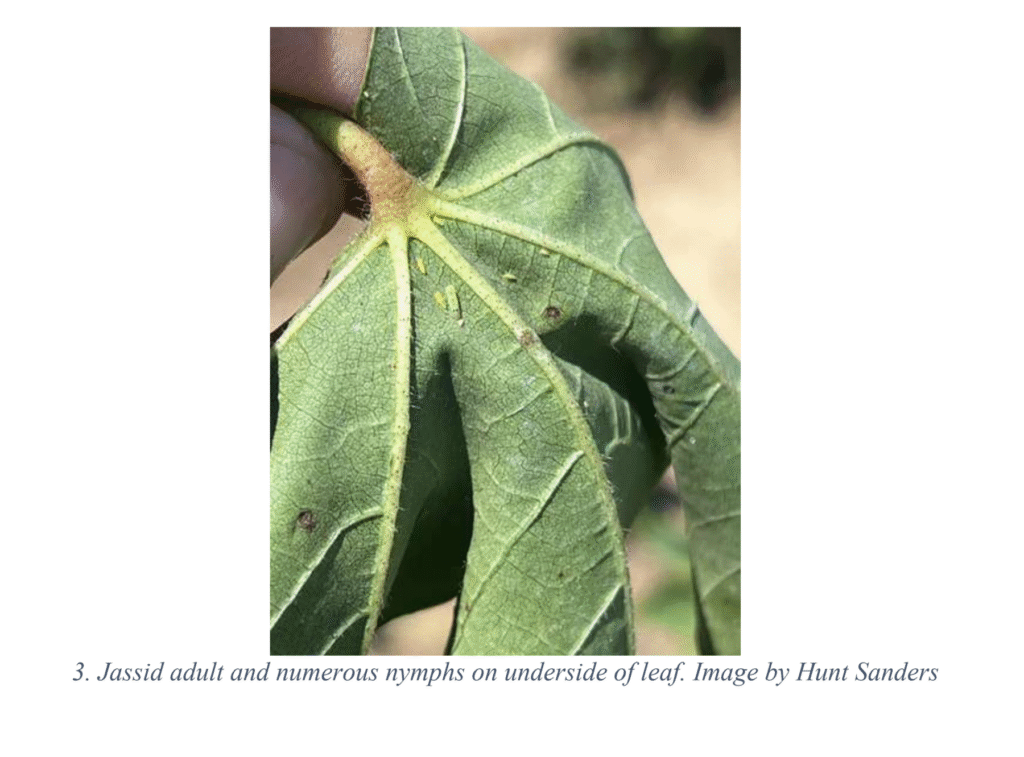
Below is more information from Phillip Roberts.
What does the damage look like from the cotton jassid?
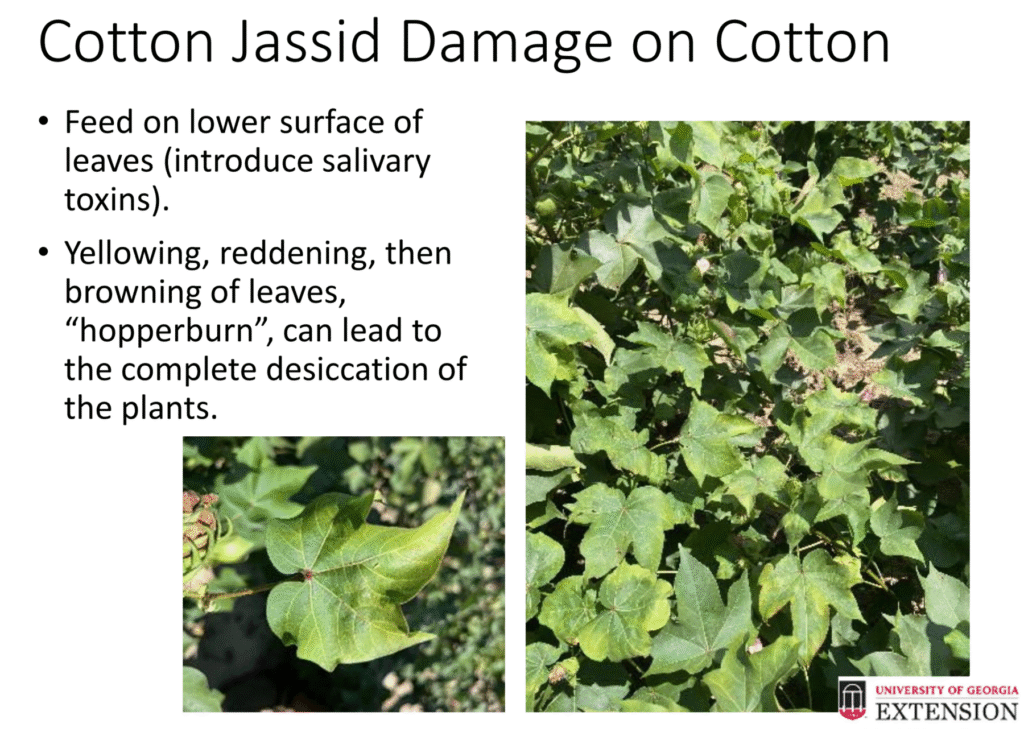
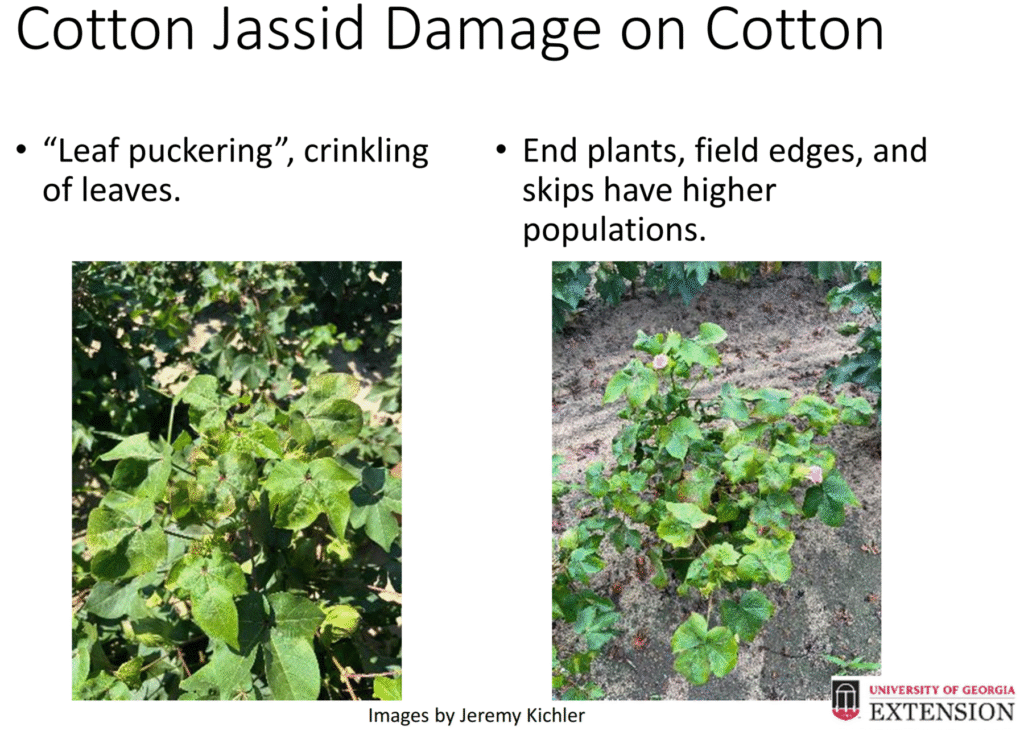
What is the biology of this pest?
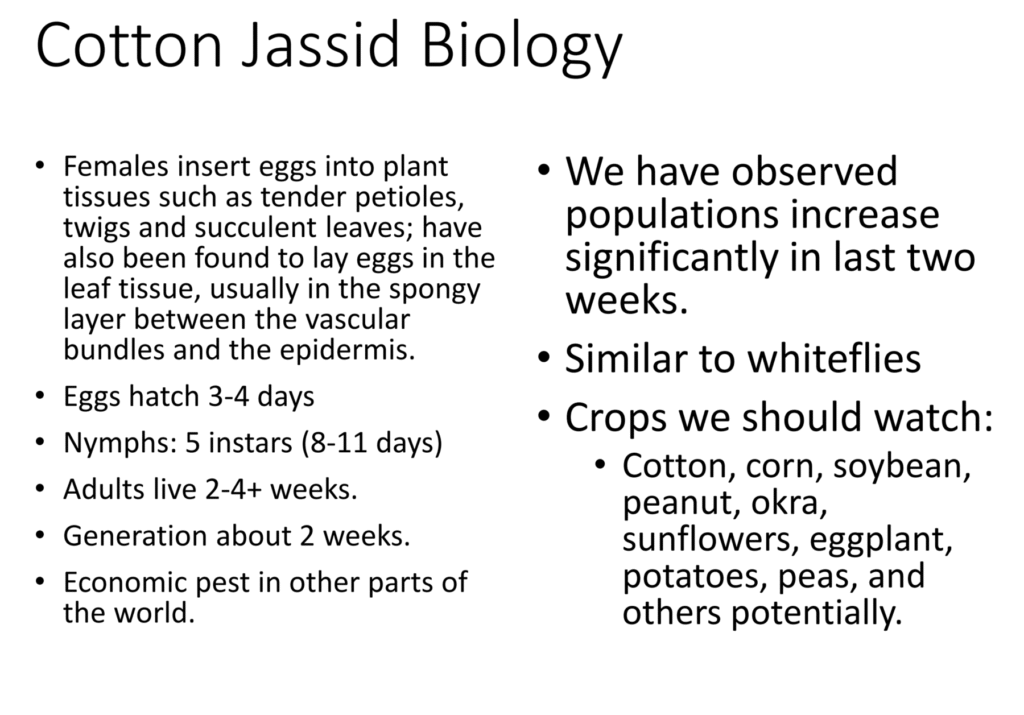
How do you scout for these darn things?
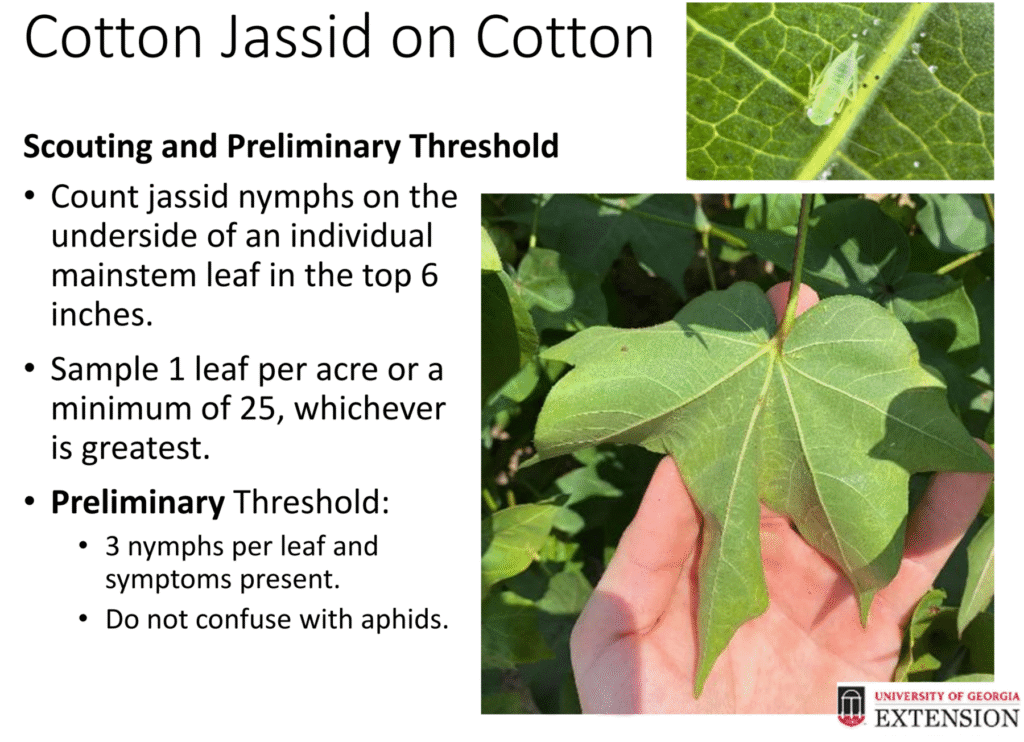
How do you control them? Well, this is the trick. A few bioassays have been conducted on this subject. According to Dr. Stormy Sparks, UGA Vegetable Entomologist, “Dr. Roberts and I have done some quick bioassays with adults, and the results are “inconclusive’. Dr. Roberts got reasonably good mortality with two cotton products we cannot use in vegetables. He also got 75-80% mortality with Assail and Actara. In my bioassay, Venom gave about 60% control, and everything else performed poorly (including other neonicotinoids, pyrethroids, Group 28s, Lannate, Torac). It is worth noting that this pest is on IRAC’s (Insecticide Resistance Action Committee) radar, with reported resistance to OPs, carbamates, pyrethroids, and neonicotinoids.” This was posted last week in this blog.
Dr. Roberts provided more bioassay information this week to county agents at a training. These bioassays are from Cook and Grady Counties.
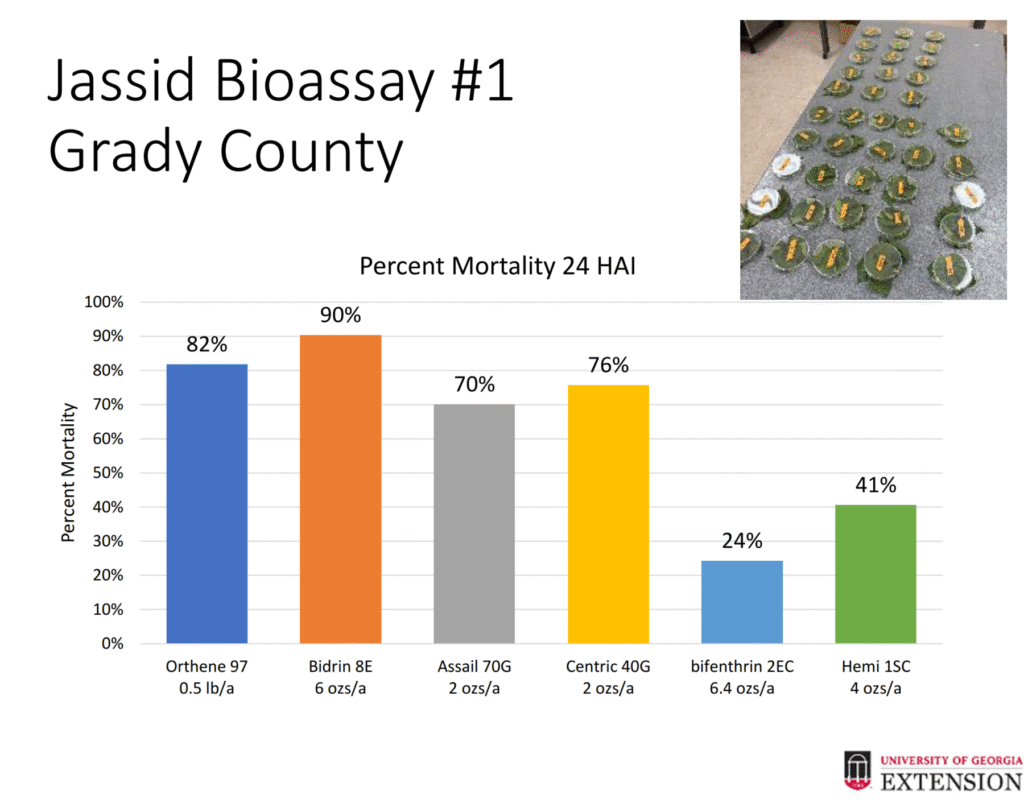
Another bioassay from Cook County provided by Dr. Roberts.
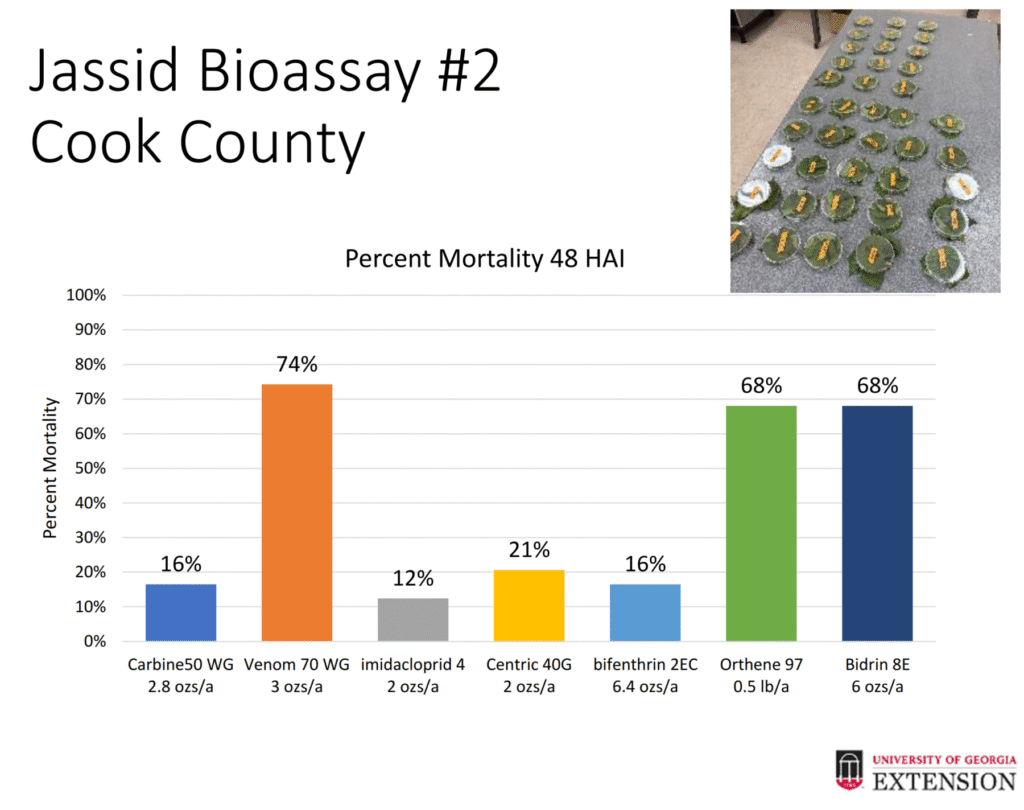
When new information about this pest is available, it will be provided to everyone. We will discuss the areolate mildew that is starting up in cotton fields around the county in the next update.
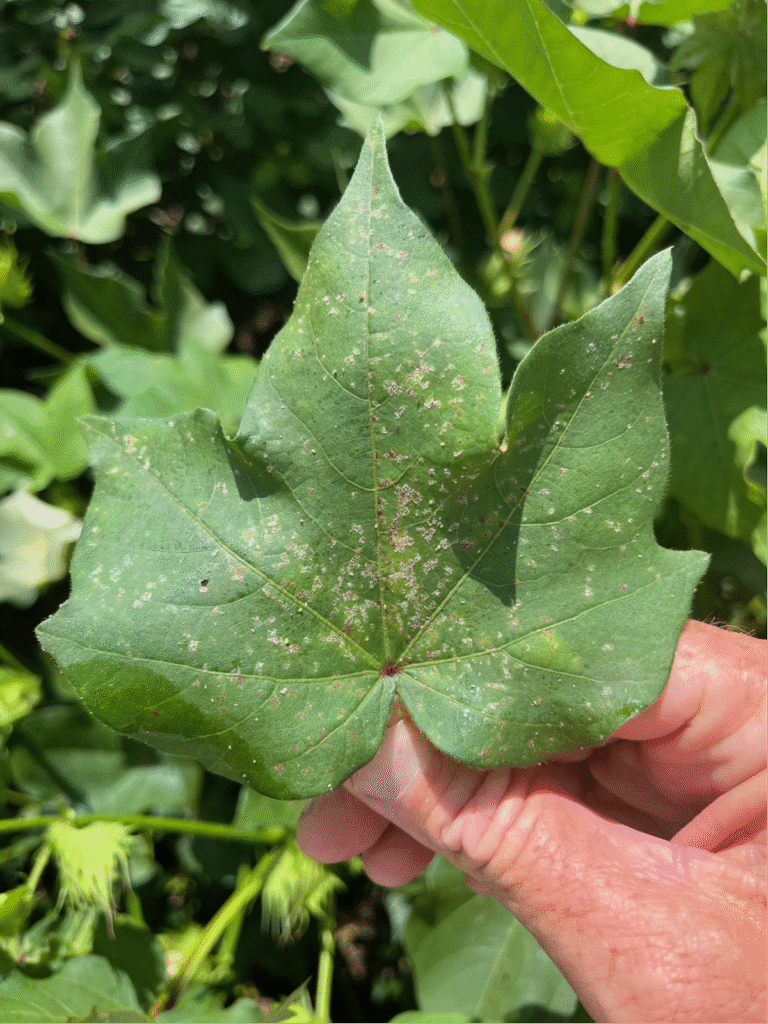
If you have questions please feel free to contact your local count Extension agent.
Have a safe week and if you have questions please call the office,
Jeremy M. Kichler
Colquitt County Extension Coordinator
The University of Georgia Cooperative Extension does not endorse or guarantee the performance of any products mentioned in this update.
